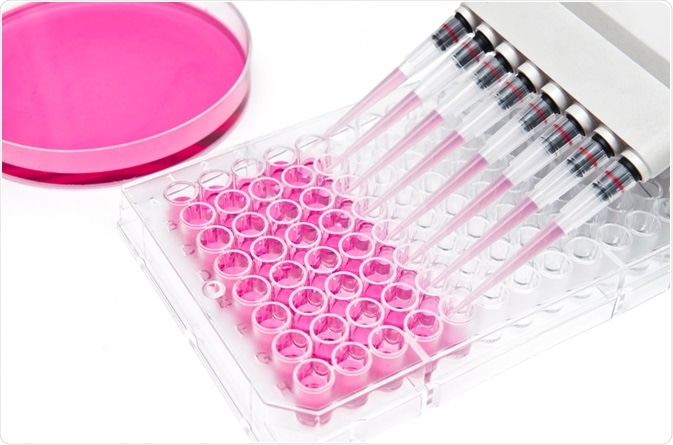Before compounds can be used as medicines, they must go through rounds of testing. These can be separated into preclinical testing and clinical testing. Assays used in preclinical testing seek to test if the compound could elicit the relevant response; first, high-throughput assays are used to select a smaller number of compounds, then those that show promise are screened further to investigate the mechanism of action.
 Image Credit: unoL / Shutterstock.com
Image Credit: unoL / Shutterstock.com
What are the differences between primary and secondary assays used during preclinical testing?
During the preclinical testing phase of drug discovery, compounds go through a variety of assays to determine their potential as a safe drug for the treatment of the disease in question.
Primary assays are carried out first, and these seek to find compounds that interact with the identified target. Secondary assays on the compounds which interact with the target then seek to see if this interaction occurs within biological systems, such as cells, as well as trying to determine the structure-activity relationship between the compounds and the target.
Finding “hits”
Primary assays seek to test compounds to the identified target, to screen those which could potentially be used as a drug. Various methods are used in this phase; these include high-throughput screening, focused screening and physiological screening.
In high-throughput screening, many compounds are tested against the target, either on its own or within a biological system (i.e. cells). These assays are typically designed so that they can be performed using plates with 384 or more wells.
Focused screening differs in that the compounds selected have been previously shown to have some potential activity against the target. For example, the compounds could interact with a specific class of drug targets, or be structurally related to compounds with known activity. This has the advantage of having fewer compounds to assay, however this could potentially miss compounds whose structure may be significantly different from those which are already known.
Physiological screening makes use of tissues rather than the target on its own or cells. These assays show how the compounds affect the tissue overall rather than just the target, more closely showing how the compound may act as a drug.
Analyzing the hits further
Once the primary assay has selected compounds that show promise, more information is needed before these can be tested further. These secondary assays can involve finding out properties of the compounds, such as the dose-response, as well as looking at the functional response elicited by the compounds.
Dose-response curves can reveal whether the compound is likely to be properly interacting with the target or not, for example, if a compound is only active at high concentrations it could be that the compound is actually reacting with another component of the assay rather than the target. Another important piece of information that is obtained from dose-response curves includes the “half-maximal inhibitory concentration”, which aids in comparing how potent different compounds are.
While compounds may interact with the target in a simple system, it is unclear whether this is also the case in more complex systems. Therefore, it is important to use assays that test the compound in a more complex system, such as lower-throughput cell- or tissue-based assays and secondary messenger assays. These assays can also reveal the possible structure-activity relationship between the compounds and the target.
Example of how assays are used in a preclinical testing study
In a preclinical testing study by Cotticelli and co., the authors investigated compounds that could rescue mitochondrial function; reduction in a protein, frataxin, had been shown to be involved in the disease progression of the neuro- and cardiodegenerative disorder Friedreich ataxia. Frataxin plays a role in the formation of iron-sulfur clusters in the mitochondrial matrix. A decrease in either the expression or function of frataxin, as in Friedreich ataxia, leads to fewer iron-sulfur clusters being formed, which causes the accumulation of iron in the mitochondria. Subsequently, this leads to increased oxidative stress, and then mitochondrial dysfunction.
For the primary assay, the authors used yeast which was deficient in Yfh1p, the frataxin orthologue in yeast. Here, 101,200 compounds were put through the primary assay to see if mitochondrial function was able to be recovered, as shown by the reduction of a tetrazolium dye.
Of the compounds tested, 302 were taken forward to the secondary assay; here, the authors used a murine cell line to see if the compounds also showed activity in mammalian cells. These cells were treated with iron and BSO to induce a Friedreich ataxia phenotype, as well as reducing cell viability. The assay investigated if any of the selected compounds could rescue cell viability.
Another assay carried out was using mutant yeast strains which lacked specific components of the electron transport chain to begin the process of determining the mechanism of action. This revealed that some of the compounds interacted with the electron transport chain directly to cause the effect, while others did not.
Further Reading